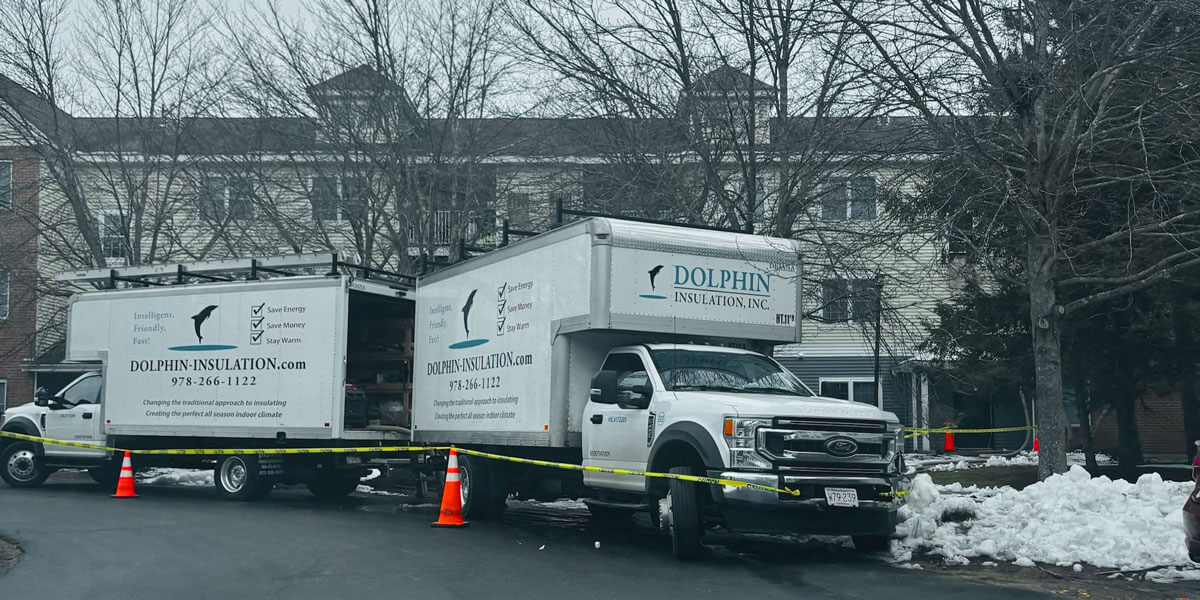Spring is finally here—snowstorms and all! We can’t make the snow go away, but we can help you prepare your home for when it does start to melt. Our focus is to prevent damage to your roof, as a result of snow melting and then freezing into ice. Luckily, one of insulation’s many benefits is making sure that your roof survives all of this unpredictable winter and spring weather.
Installing loose-fill cellulose insulation in your roof is the most beneficial step to prevent ice dams and icicles, but there are many other “Band-Aid” fixes that will most likely be tossed your way in the upcoming months. Companies will try to get you to invest in a new roof, or get bigger gutters to magically prevent ice build-ups, or buy heat cables. These “fixes” are all just reactions to ice damage; insulation tackles the root of the problem.
Now, it’s time for the basics. When heat escapes through your roof, it melts the bottom layer of the snow. This melted snow then drips down to the edge of your roof to re-freeze into icicles, or ice in your gutters. It is this re-frozen snow that causes damage to your roof, including leakage inside your home, structural damage, and rotting wood and timber.
Many companies try to sell heat cables, claiming that they will melt the ice that damages your roof. Heat cables are strips that line your roof and, when turned on, will melt the snow and ice that they come in contact with. While this proposal sounds logical, it is only a temporary fix to your problem. Think about it this way: you spend more energy to heat up your heat cables while also losing energy through the heat that escapes out of your roof. It’s a lose-lose.
The problem needs to be looked at as a whole, not just as an end result that constantly requires fixing. If you only install heat cables, your roof’s ice problems will never actually be fixed. You will have to push more and more energy into the cables each time you go to melt the ice, thus losing more energy and more money.
It makes perfect sense: ice is formed by water, and water comes from the melting snow. Stop the snow from melting and re-freezing and your problem disappears from its roots on your roof. At Dolphin, we make this simple by conducting two methods to seal off your roof’s interior from the outside snow.
Insulating your roof keeps the heat inside your home. Heat rises, and a home with ineffective insulation lets heat wander out of your home as you push more heat in. This wastes a lot of energy while causing damage to your home. Also, air sealing prevents the warm air from escaping your home and melting the snow. So since we are still stuck in winter weather, be proactive: insulate and seal your roof to prevent damage and to save energy.















